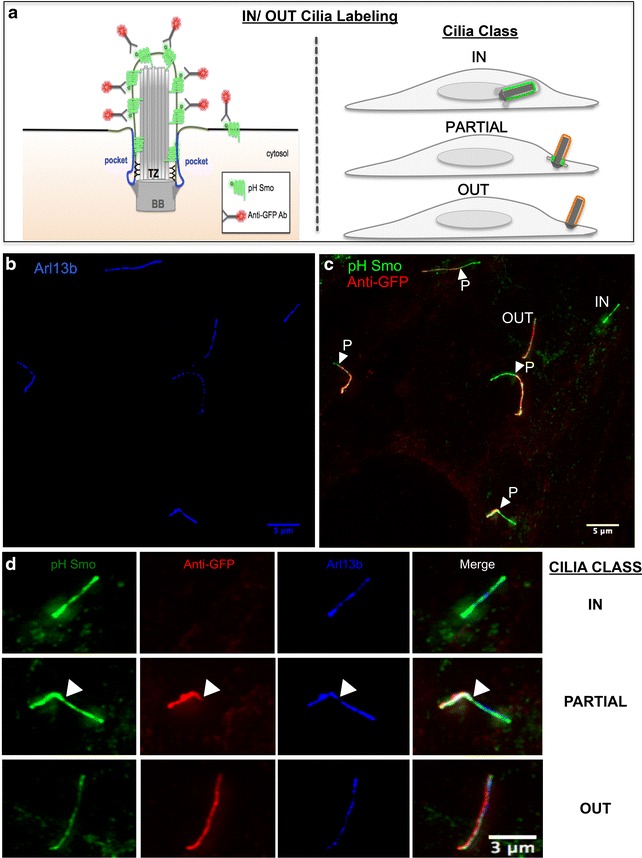Fig. 2.

The IN/OUT assay for ciliogenesis. a (left side) Schematic of the IN/OUT assay. Ciliary membrane is marked by the expression of the pH Smo (green) GPCR. Outside/extracellular portions of cilia are labeled by an anti-GFP antibody (red) in unpermeabilized cells. Most of the pH Smo localizes to the ciliary membrane but a small fraction remains in the plasma membrane. a (right side) Diagram illustrating three different ciliary stages. Intracellular cilia (IN) are marked by the lack of anti-GFP signal. Partially extruded cilia (PARTIAL) are marked by the presence of the anti-GFP (red) signal on the extracellular side and just pH Smo (green) signal on the intracellular (pocket) region of the cilia. Fully emerged cilia lacking pockets (OUT) are marked by a complete colocalization of the green and red signals (orange–yellow). b htert-RPE1 cells starved for 48 h, fixed, permeabilized and stained with the ciliary marker Arl13b (blue). c htert-RPE1 cells stably expressing pH Smo (green), starved for 48 h, fixed, stained with anti-GFP (red) without permeabilization and imaged by structural illumination microscopy (SIM). Note that many different stages of ciliogenesis can be observed within the same field of view including fully inside (IN) and fully outside cilia (OUT) as well as many partially emerged cilia (P). Arrowheads indicate the extracellular to intracellular transition on partially emerged cilia. d Zoom in images from (c) showing the three classes of cilia with Arl13b expression
